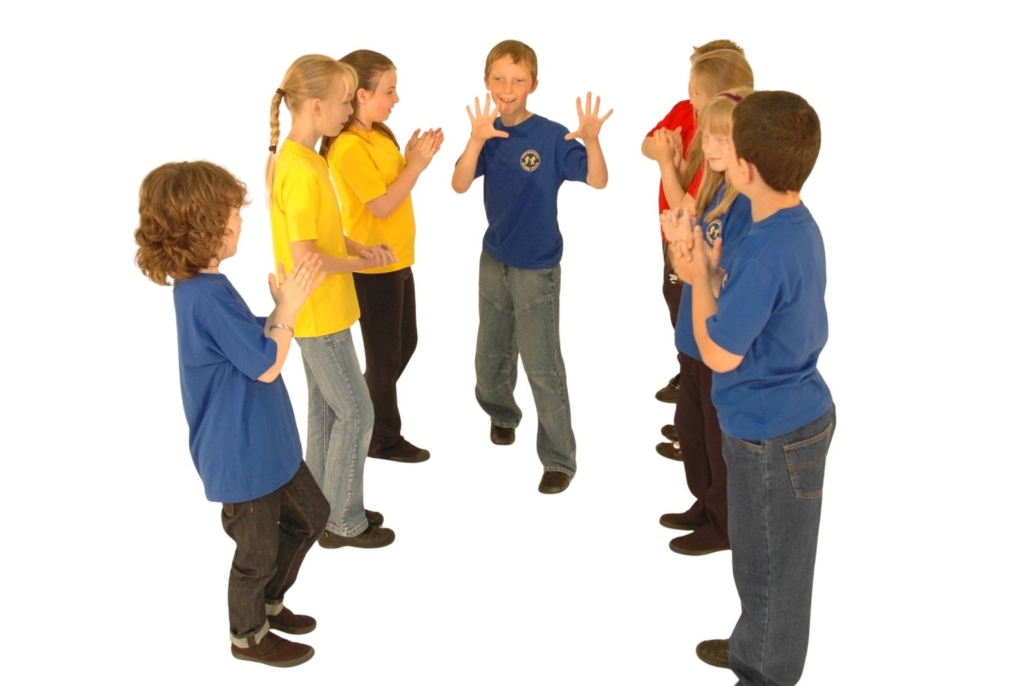How Active Music aligns with the Model Music Curriculum KS 2
How Active Music KS2 aligns with the MMC

1) Singing
MMC asks for: widening repertoire; good vocal production; accurate pitch; part-singing (rounds/partner songs); phrasing, dynamics; frequent performance.
Active Music delivers:
- Y3–Y6 Singing Games & Core Units: sing in unison with clear diction; move to pulse; part-singing/rounds and canon (Y4 L4; Y5 L4; Y6 L3–L4); 2-part singing develops to 3–4 parts through rounds/overlapping games.
- Pitch units (Y3–Y6): progressive solfa (So–Mi → full pentatonic Do–Re–Mi–So–La); accurate pitch-matching; small to larger leaps; sing from notated rhythm/pitch patterns; perform as class/individuals.
- Expressive control: internalising, phrasing, and dynamic control are baked into cue-word actions, “thinking voices,” and performance/appraisal cycles.
Matches MMC outcomes for ensemble singing, tuning, rounds/partner songs, phrasing/dynamics, and regular performing opportunities.
2) Listening
MMC asks for: critical/active listening; broad repertoire/cultural contexts; repeated encounters; live music where possible.
Active Music delivers:
- Every unit: “thinking voices,” internalising, memorising/recalling phrases; appraise & improve; compare textures (pulse/rhythm/ostinato layers), form (rounds/echo/call-response).
- Texture & structure: rounds, canons, ostinatos, rhythm rounds (Y4 L5; Y6 L5) develop listening across parts and ensemble awareness.
- The songs in Active Music come from a variety of traditional sources, including well-loved nursery rhymes, playground chants and folk tunes that have been passed down through generations. Many are rooted in English traditions, while others have clear links to the USA, Africa and the Caribbean, giving children a culturally rich and varied repertoire. This blend ensures the songs feel both familiar and engaging, while also connecting pupils to the wider traditions of music-making.
3) Composing (Improvise & Compose)
MMC asks for: improvisation; composing for purpose; structures; texture; pentatonic; chords/triads by Y5–6; capture ideas in notation/technology.
Active Music delivers:
- Improvisation from Y3 onward: improvise rhythm patterns (Y3 L6; Y5 L6; Y6 L4); movement-based improvisation; extend 8–16-beat ideas (Y5 L4; Y6 L4).
- Composition structures: question/answer, ostinato layering, rhythm rounds, building/reducing layers (Y5 L6; Y6 L6); ternary-like lesson arcs (begin/middle/end).
- Pitch work: pentatonic composing/playing on tuned instruments (Y3–Y6 Pitch L5–L6; Instrumental Y3–Y6 multiple lessons).
- Harmony foundations: drones/ostinatos; Y5–Y6 create 3 layers (drone/ostinato/melody); maintain own part with ensemble awareness (Y5 Pitch L5; Y6 Pitch L5).
Aligns with MMC on improvisation, pentatonic composition, textures, form, purpose, and multi-layered works.
4) Performing (including Instrumental & Notation)
MMC asks for: whole-class instrumental access; ensemble skills; increasing independence; staff notation within an octave by Y6; rhythmic values & time signatures; dynamic range; stagecraft.
Active Music delivers:
- Whole-class instrumental use: tuned/untuned percussion every year; xylophones/glockenspiels/chime bars; pulse/rhythm on instruments; layered parts.
- Ensemble skills: start/finish together; listen across parts; pass steady pulse; perform/appraise every unit.
- Notation & reading:
- Rhythm: Ta, Te-te, rest, Ta-a (crotchets, paired quavers, rests, minims) + 16-beat patterns; read, create, and perform notations (Y3–Y6 Rhythm & Pulse L3–L5; Instrumental Compositions Y4–Y6).
- Pitch: read/sing from notated rhythm and pitch patterns using solfa; move to full pentatonic reading/playing by Y4; compose/write own rhythm/pitch patterns by Y3–Y6.
- Range & skills to MMC expectations: maintain parts, duet/2-part textures → multi-part rounds; builds to playing/reading within an octave (do–do) on tuned percussion/chime bars by Y5–Y6 Pitch/Instrumental units.
Strong alignment with MMC performing and notation strands (rhythmic values, part-playing, within-octave pitch work, ensemble independence).
5) MMC “Indicative musical features” (quick tick-list)
- Rhythm/Metre/Tempo: pulse/beat; accelerando/rallentando (tempo changes), metre via circle passing/games; syncopation approached through rhythm games/ostinato interplay by Y5–Y6.
- Pitch/Melody: high/low; pentatonic; range widening (do–do); leaps in later years.
- Structure/Form: call-response; echo, ostinato, rounds/partner songs; sections/repetition/contrast; build-reduce layers.
- Harmony/Texture: drone, ostinato, tri-layer textures; melody+accompaniment via drones/ostinatos; part-singing.
- Dynamics/Articulation: loud/quiet; cresc/decresc via cue words; realised through action/playing contrasts.
- Instruments/Techniques: tuned & untuned percussion, body percussion; developing technique & effects through games.
All present and progressively developed across Y3–Y6.
